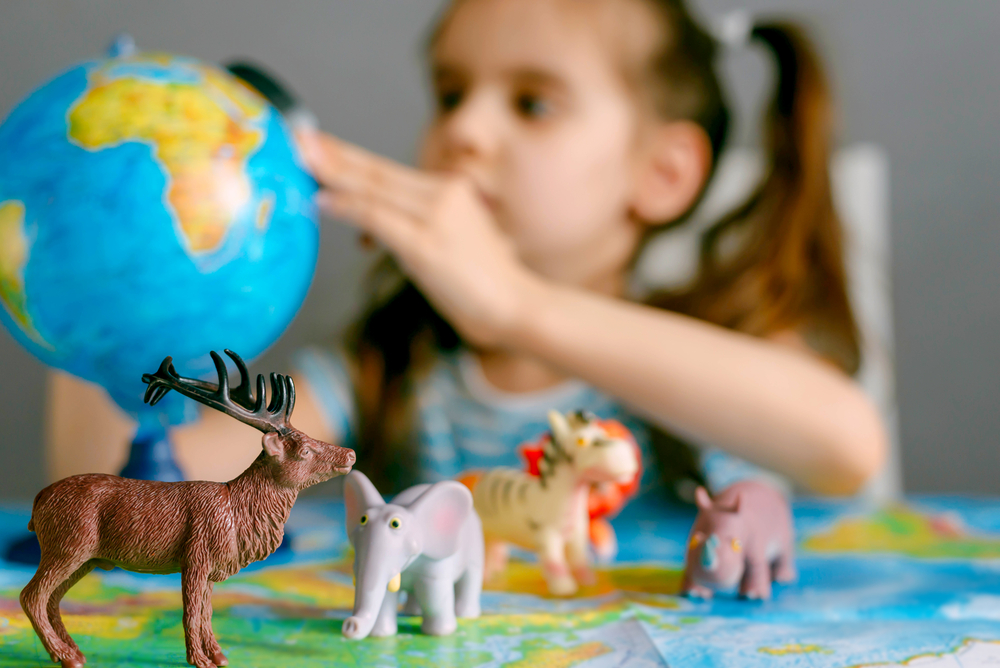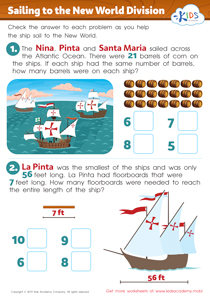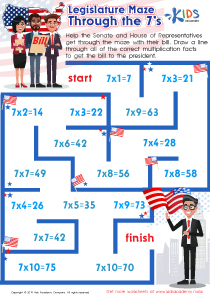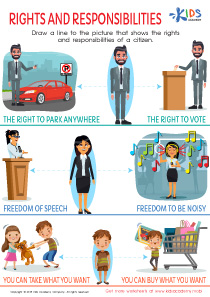Map reading Normal Geography Worksheets for Ages 5-8
3 filtered results
-
From - To
Discover the fun of map reading with our "Map Reading Normal Geography Worksheets for Ages 5-8" at Kids Academy! Designed to spark curiosity and enhance spatial thinking, these worksheets are perfect for early learners. Children will explore essential map-reading skills such as understanding symbols, directions, and key landmarks. Each activity is crafted to be engaging and educational, making geography exciting and accessible. Help your child build a solid foundation in map navigation and improve their problem-solving abilities. Empower young minds with the tools they need to navigate their world confidently with our age-appropriate geography worksheets.
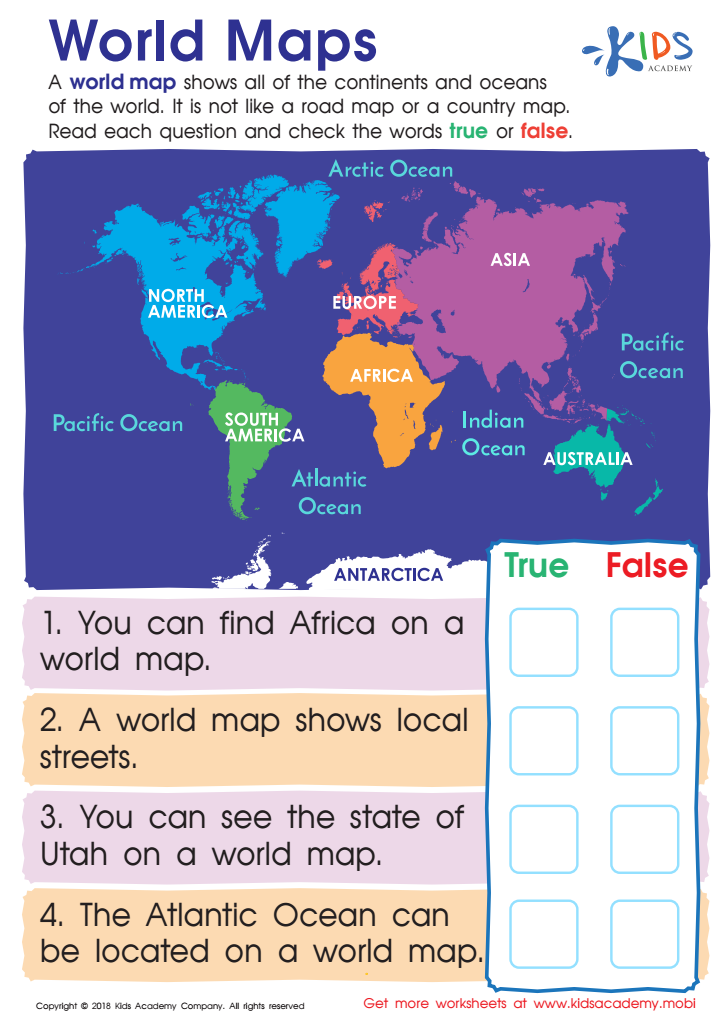

World Maps Worksheet
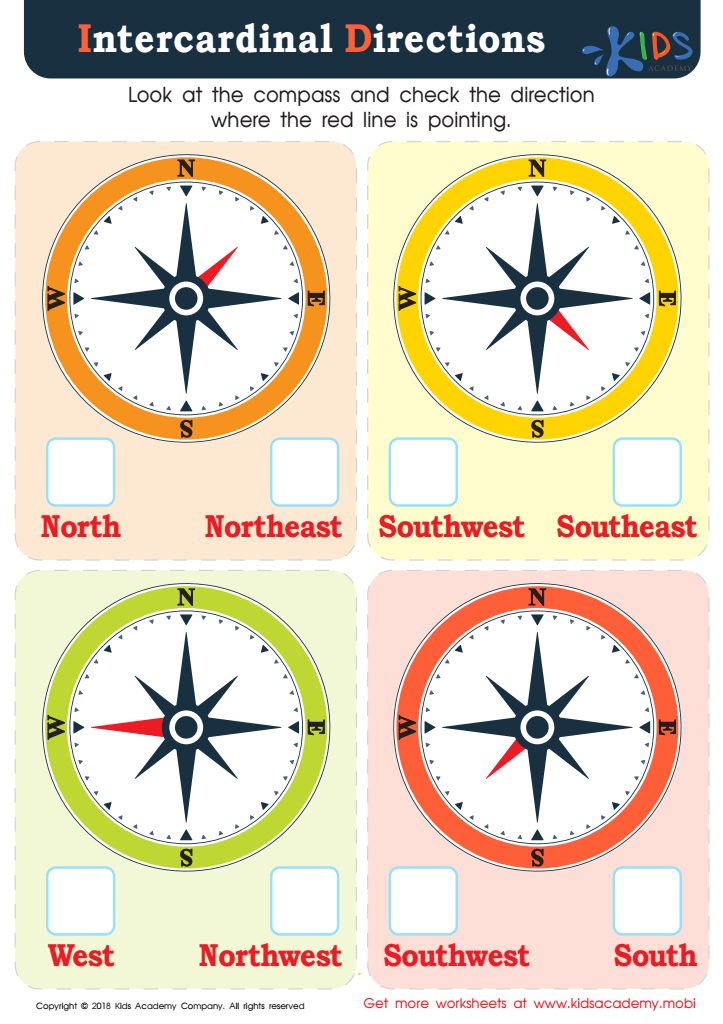

Intercardinal Directions Worksheet
Introducing children aged 5-8 to map reading and basic geography is crucial for several key reasons, as it lays a strong foundation for their educational growth and understanding of the world.
Firstly, early exposure to maps helps develop spatial awareness, an essential cognitive skill. Children learn to comprehend abstract concepts like distance and direction, which are fundamental in daily navigation and broader learning contexts. This skill enhances their ability to read and interpret other visual information.
Secondly, map reading fosters critical thinking and problem-solving abilities. As children identify locations and follow routes, they engage in tasks that involve planning and decision-making. This kind of analytical thinking is beneficial across various subjects, including math and science.
Geography education also nurtures a global perspective. Understanding different regions, cultures, and natural landscapes helps children appreciate diversity and the interconnectedness of communities worldwide. This early groundwork promotes empathy and curiosity about the world.
Moreover, integrating map reading into lessons can make learning more interactive and fun. Hands-on activities, such as creating simple maps or using them in scavenger hunts, can engage young learners effectively.
In summary, caring about map reading and geography for young children equips them with critical cognitive skills, fosters global awareness, and makes learning enjoyable. This foundational knowledge supports their overall academic and personal development.
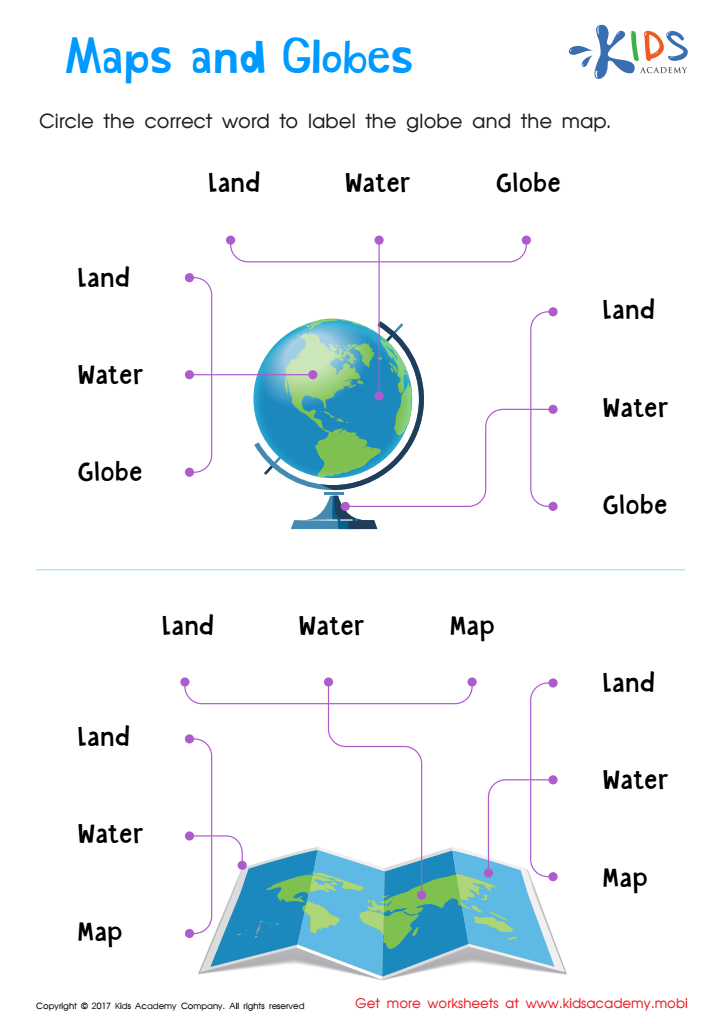
 Assign to My Students
Assign to My Students


